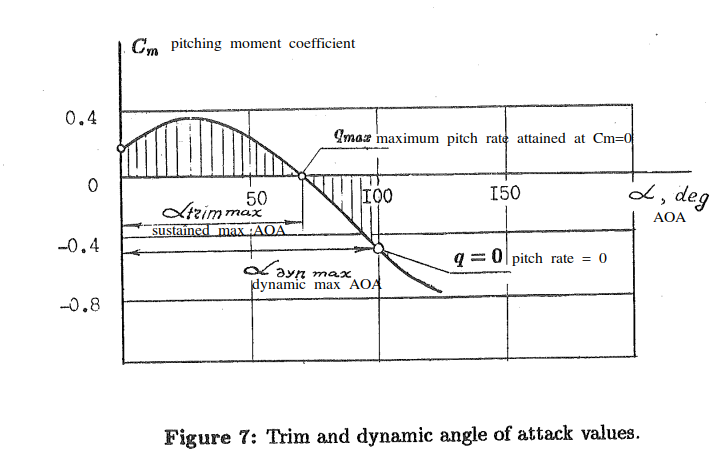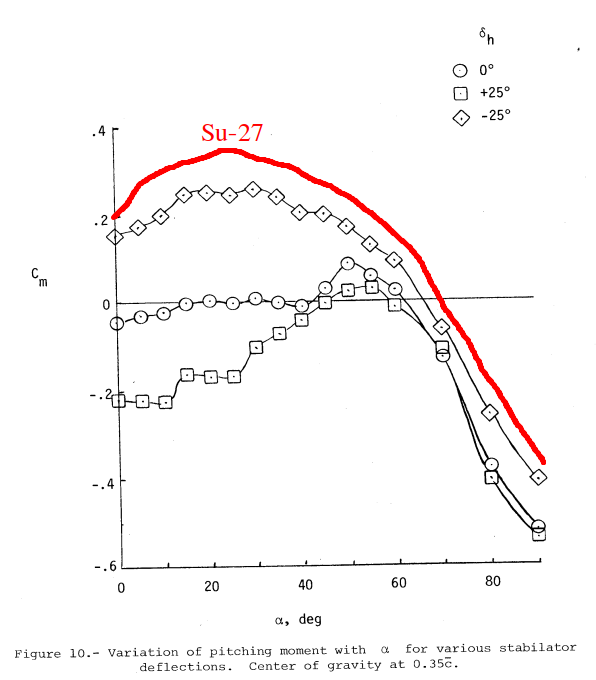Continuing from this answer, the aircraft actually requires a strong pitching moment to maximize the shaded area of $C_m$ > 0 (nose-up moment) by full stabilator trailing edge up (TEU), as shown in the Su-27 Cm curve, in order to maximize pitch rate to get into the $C_m$ < 0 (nose-down moment) area as far as possible. The $C_m$ < 0 area above 70 deg AOA, where significant nose-down moment is mostly generated by the aircraft itself, allows pitch motion to be stopped and the aircraft to be recovered from the high AOA region naturally.

Source: High Maneuverability Theory and Practice, TsAGI. (highly recommended)
So Why the area of $C_m$ > 0 matters? Because pitch acceleration is calculated as :

Where the component of pitch acceleration due to aerodynamic moments related to $C_m$, as indicated in the equation is:
- total $C_m$ * dynamic pressure * reference wing area * mean air chord / moment of inertia about the body Y axes $I_Y$.
Total $C_m$ also includes other moments, such as the pitch dampening moment $C_m$q, but I'll keep the complexity to a minimum extent.
Pitch rate (q) is simply the integration of q-dot. So a larger $C_m$ > 0 area would provide a greater pitch rate, if all the other variables are fixed. This would require the stabilator to be deflected and held to the max position as soon as possible, so the Direct Link control mode is used in the Su-27. Center of gravity is preferably at its aft limit to increase the area of $C_m$ > 0.
There's not much the stabilator can do once enough pitch rate is generated above the AOA limit, say, 24-26 deg AOA, where the maximum nose-down moment available (with full stab trailing edge down / TED) for stopping the pitch motion plummets, indicating a stalled stab.
The problem with the F-16 during a recovery is probably the deep stall around 60 deg AOA, as the full stab TED is not able to generate even a negative $C_m$, but rather, the aircraft would pitch-up. Pitch rate would converge and AOA can be stabilized at the deep stall trim point where $C_m$=0, in the positive static margin area of AOA > 50:

Source: NASA TP-1538. (also highly recommended)
But this would usually happen with a relatively low initial pitch rate. When recovering from a cobra maneuver, the negative pitch rate reaches its maximum at 60 deg AOA ($C_m$=0) with either a neutral or TED stab, and can easily overcome the pitch-up region. After AOA is reduced to 40 deg, where both static margin and $C_m$ are close to zero with a neutral stab, a pull on the stick may be required to stop the pitch down motion completely.
This all assumes that the FLCS is non-existent and we have direct control of the stabilator.




